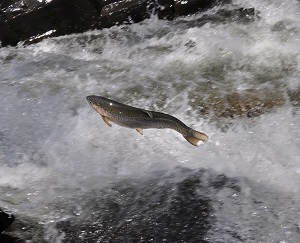Consider Delayed Mowing to Conserve Grassland Birds
MONTPELIER,
Vt. – Summer in Vermont is greatly enriched by the state’s many grassland
birds, from bobolinks flushing up from a grassy field to the beautiful song of
an eastern meadowlark. But many of these species are in decline due to
the loss of appropriate grassland habitat.
The
Vermont Fish & Wildlife Department and Audubon Vermont are encouraging
landowners to help promote these beloved species and give these birds a chance
to complete their nesting season simply by altering the times of year that they
mow large fields.
Bobolinks
build nests from May through July among the grasses and wildflowers of fields
and meadows. When bobolinks are present, other grassland bird species
such as savannah sparrows and vesper sparrows may also be nesting among the
grasses. Deer fawns, wild turkey chicks, and other animals take refuge in
the grass, and are also at risk by mowing too early.
“People
maintain large fields and meadows in Vermont for a variety of reasons, from
commercial hayfields and grazing pastures, to simple aesthetic beauty,” said
John Buck, biologist for the Vermont Fish & Wildlife Department.
“Mowing is the most common means of maintaining the grasses but if mowed too
soon in the summer, many grassland bird species will lose their nest and any
hatchlings."
According
to Buck, landowners who mow their fields for aesthetic reasons can maintain
these fields and accommodate the nesting birds simply by cutting later in the
summer. He recommends an August 1 start date.
For
farmers who maintain commercial hayfields and grazing pastures, Audubon Vermont
coordinates the Bobolink Project in association with Mass Audubon, the
University of Vermont, and several other partners. The Bobolink Project uses donated funds to
provide financial assistance to participating farmers who modify their mowing
schedules so that grassland nesting birds can successfully raise their young. This
year, they worked with 20 farmers to protect over 961 acres of grassland
habitat. “The Bobolink Project is a great way for the general public to
get involved in grassland bird conservation” said Audubon’s Mark LaBarr.
For
more information, go to www.bobolinkproject.com or for landowner
management assistance, see www.vtfishandwildlife.com.
For
Immediate Release:
May 31, 2018
Media
Contact:
John Buck, VT Fish & Wildlife, 802-777-5773; Mark LaBarr, Audubon Vermont,
802-434-3068


